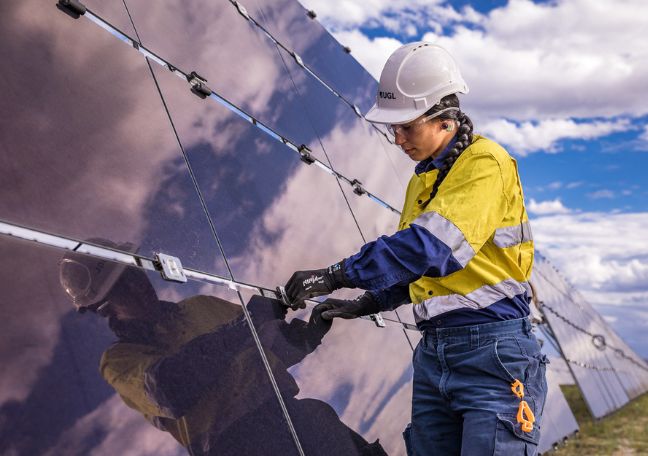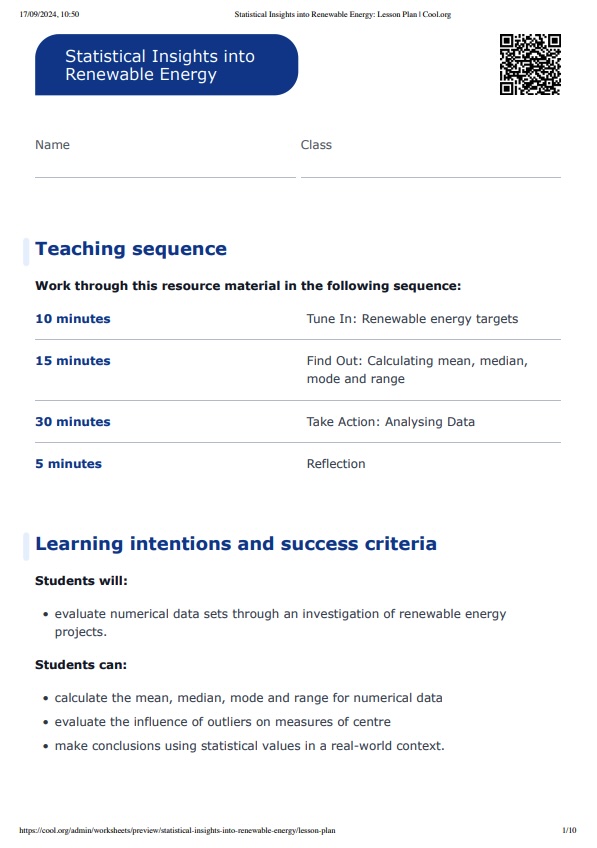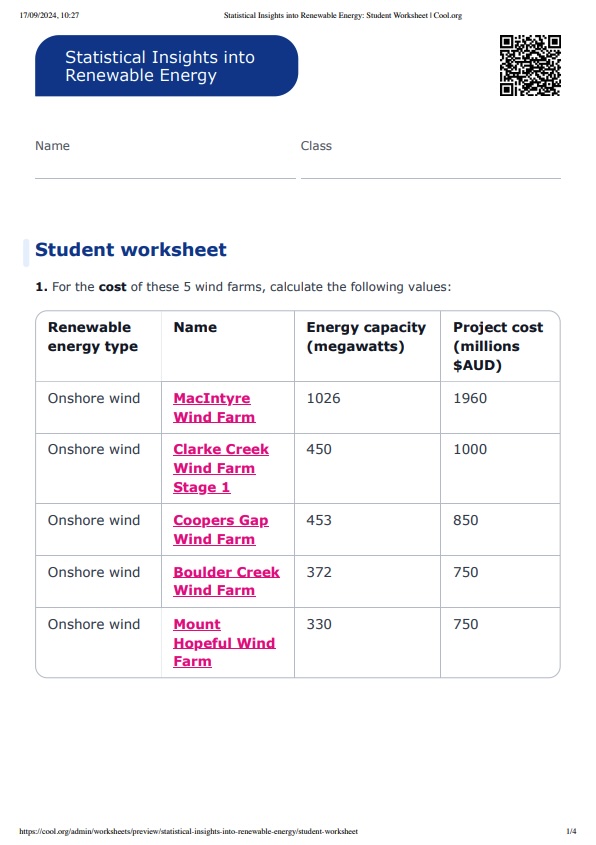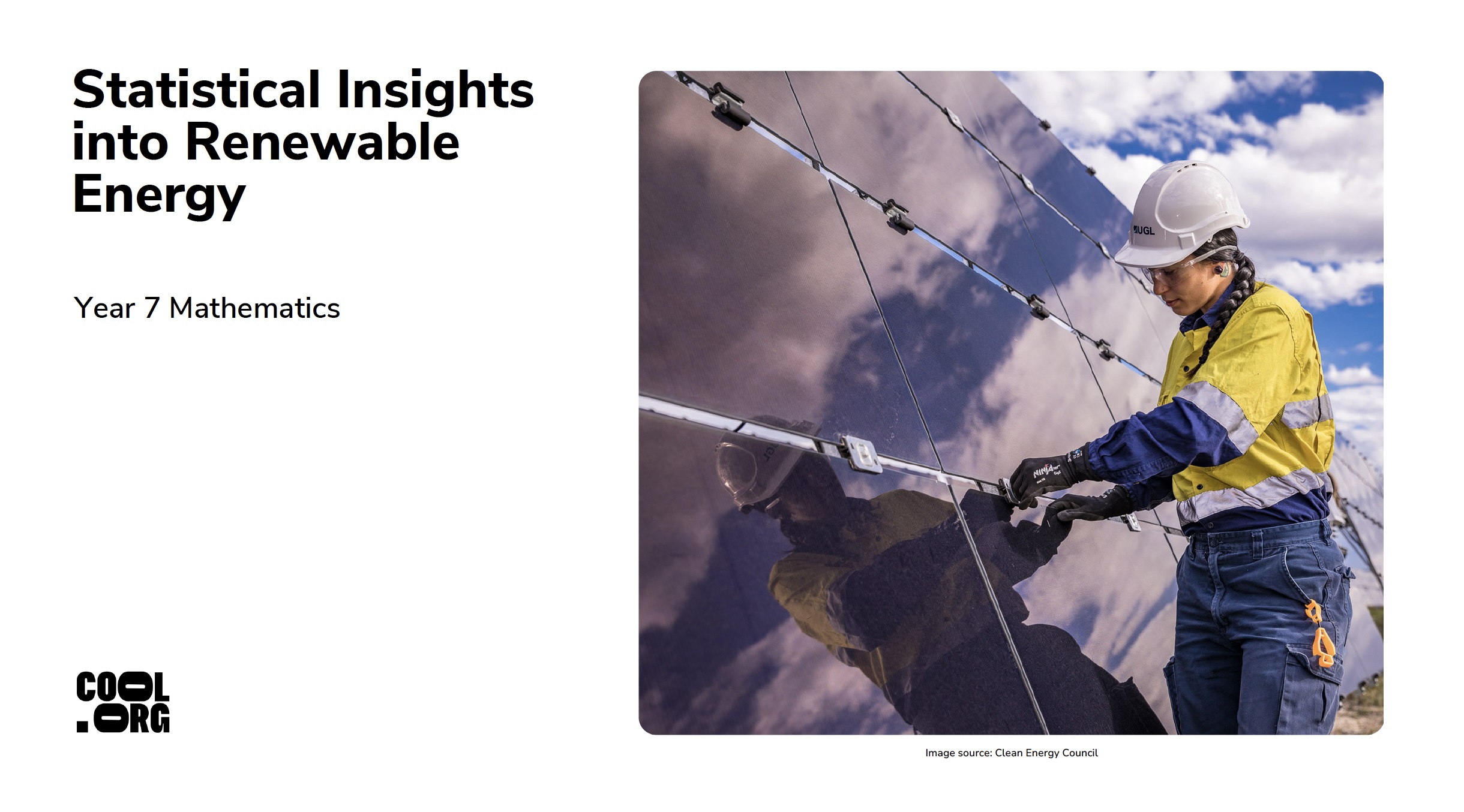Lesson summary
Students will analyse numerical data relating to the energy capacity of renewable energy projects in Australia and Queensland by calculating summary statistics such as the mean, median and mode, as well as creating graphical representations. Students will investigate the feasibility of Australian renewable energy targets by making and justifying decisions about which measures of central tendency provide useful insights into the nature of the distribution of data.
Learning intentions:
Students will...
- evaluate numerical data sets through an investigation of renewable energy projects.
Success criteria:
Students can...
- calculate the mean, median, mode and range for numerical data
- evaluate the influence of outliers on measures of centre
- make conclusions using statistical values in a real-world context.
Lesson guides and printables
Curriculum links
Select your curriculum from the options below.
Lesson details
Skills
This lesson is designed to build students’ competencies in the following skills:
- critical thinking
- communication
- digital literacy
- problem solving
Curriculum Mapping
Australian Curriculum (v9.0) content description: Year 7, Mathematics
Students will learn to:
- acquire data sets for discrete and continuous numerical variables and calculate the range, median, mean and mode; make and justify decisions about which measures of central tendency provide useful insights into the nature of the distribution of data (AC9M7ST01)
- create different types of numerical data displays including stem-and-leaf plots using software where appropriate; describe and compare the distribution of data, commenting on the shape, centre and spread including outliers and determining the range, median, mean and mode (AC9M7ST02).
Relevant parts of Year 7 achievement standards: Students interpret data in terms of the shape of distribution and summary statistics, identifying possible outliers. They decide which measure of central tendency is most suitable and explain their reasoning.
NSW Syllabus outcomes:
- classifies and displays data using a variety of graphical representations (MA4-DAT-C-01)
- analyses simple datasets using measures of centre, range and shape of the data (MA4-DAT-C-02)
General capabilities: Critical and Creative Thinking, Digital Literacy, Literacy, Numeracy
Cross-curriculum priority: Sustainability
Level of teacher scaffolding: Medium: facilitate class discussion and complete a worked example
UN Sustainable Development Goals
UN SDG 7: Ensure access to affordable, reliable, sustainable and modern energy for all.
- Target 7.2: By 2030, increase substantially the share of renewable energy in the global energy mix.
Resources Required
- Device capable of displaying audiovisual material
- Student devices for individual research
Additional Info
This lesson has been developed in partnership with the Queensland Government through Queensland's Clean Energy Workforce Roadmap. Cool.org would like to acknowledge and express our gratitude to the Clean Energy Council for the expertise and advice provided in creating these resources.
Related Professional Learning
STEM Professional Learning Pathway
Quick summary: Enhance your practice with Cool.org's STEM Professional Learning Pathway. This year-long plan is designed to build your skills and capabilities in teaching STEM, ultimately transforming you into a STEM Innovator. The pathway will prepare you to integrate STEM education effectively, adapt to technological advancements and inspire students to succeed in a rapidly evolving world.





Welcome back!
Don't have an account yet?
Log in with:
Create your free Cool.org account.
Many of our resources are free, with an option to upgrade to Cool+ for premium content.
Already have an account?
Sign up with:
By signing up you accept Cool.org's Terms and Conditions(Opens in new tab) and Privacy Policy(Opens in new tab).